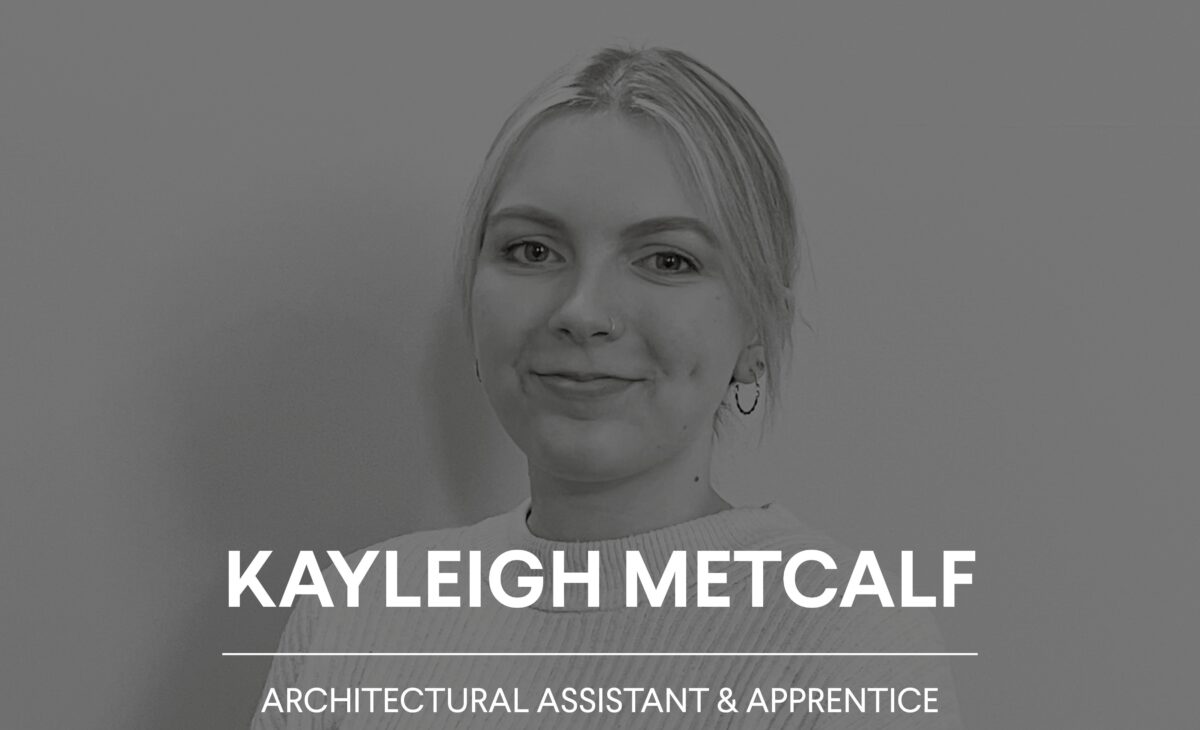As part of National Apprenticeship Week, we spoke with Kayleigh Metcalf, an apprentice at Gradon Architecture. Based in Newcastle, Kayleigh joined the firm in 2022 and has since become an integral part of the team, contributing to a variety of projects.
Kayleigh’s interest in architecture started at a young age, sparked by a love of Lego and housebuilding in The Sims. This interest continued into her teens, and following completion of her A-levels, she had her sights set on higher education. After showcasing her passion and portfolio in an interview, she secured a place at Newcastle University. Following her graduation, she joined Gradon Architecture as a Part 1 Architectural Assistant and was later invited to stay on to complete her Master’s degree as an apprentice.
How does this compare to university, and why was it the right career path for you?
Choosing the apprenticeship route was a clear decision for me—it provided the opportunity to gain hands-on project experience while earning a wage. Returning to full-time study wasn’t financially feasible, so without this pathway, I may have had to reconsider whether becoming an architect was achievable.
Apprenticeships and T-level schemes play a crucial role in promoting social mobility, ensuring that students from all backgrounds can access opportunities in architecture. From my experience, I’ve gained far more from practical, real-world learning than from a purely academic setting. Working on live projects has allowed me to navigate challenges, apply my studies in a meaningful way, and learn directly from experienced professionals.
What does a typical day look like for you, and what’s been your most exciting project so far?
No two days are the same, which keeps things exciting. On Mondays, I attend university, working with my design tutor and peers. The rest of the week is spent collaborating with the team, working on projects, attending meetings, and visiting sites. I also take time to develop my skills—whether during lunch breaks or in the evenings, there’s always something new to learn, and I’m surrounded by people who inspire and challenge me.
One of my favourite projects has been the Lemington Church refurbishment, which is transforming the space into fully accessible food and clothing bank facilities for the local community. I’ve had the privilege of seeing the project progress from Stage 1 to Stage 5, working closely with the client and design team.
What value do apprenticeships bring to apprentices and employers?
It’s a symbiotic relationship; I learn things in the workplace that benefit my university work and I learn things at university that benefit me in the workplace. The extensive research that I undertake as part of my apprenticeship means that I am bringing new ideas and techniques into my work projects on a regular basis. The workload can be intense at times and does require managing, but generally I think the phrase, “if you want something done, give it to a busy person”, rings true.
What key challenges have you faced in the role?
One challenge has been adapting to working across wider teams and collaborating with a variety of people, which has been a valuable learning experience. The construction sector has traditionally been male-dominated, which can be daunting, but I’ve focused on building my confidence and communication skills to navigate these situations more effectively.
What have you learned that you didn’t expect to?
Working alongside my peers in the studio has been invaluable. We come from different practices and backgrounds, which means we’re constantly sharing insights and techniques that improve our drawing, model-making, and design processes. This collaborative learning environment has been one of the most rewarding aspects of the apprenticeship.
Where do you see yourself in the next five years?
I aim to be fully qualified and working on projects that bring meaningful benefits to communities and the environment. Through my work, I’ve developed a strong interest in ecologically sensitive design and person-centred care, and I hope to pursue these specialisms further in future projects.

